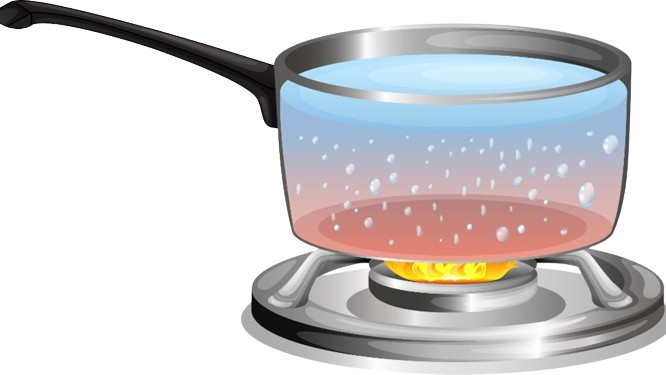Convection heat transfer is a fundamental process that plays a critical role in various engineering and scientific applications. Understanding and optimizing convective heat transfer are essential for improving energy efficiency, thermal management, and system performance across a wide range of industries. This article provides an in-depth exploration of convection heat transfer, covering its fundamental principles, calculation methods, measurement techniques, and strategies for enhancement.
Contents
ToggleAdditionally, the article discusses the application of Computational Fluid Dynamics (CFD) in simulating convective heat transfer, as well as the different types of convection heat transfer mechanisms. By examining practical examples and strategies for improving convective heat transfer, this article aims to provide valuable insights into the complex interplay between fluid dynamics and heat transfer phenomena.
What is convective heat transfer?
Convection is the process of heat transfer through the movement and mixing of molecules within a liquid or gas. Convection heat transfer involves two mechanisms: energy transfer through random molecular motion (diffusion) and through the bulk motion of the fluid (advection). The latter occurs because large groups of molecules move collectively, contributing to heat transfer when there’s a temperature gradient. This cumulative transport, involving both molecular and bulk motion, is commonly referred to as convection. In this article the term convection heat transfer is used to describe thermal energy transfer between a surface and a fluid moving over the surface.

What is the formula of convection heat transfer?
The rate of heat transfer q [W] between a surface and a fluid moving over it is calculated using equation 1. h is the convective heat transfer coefficient [W.m-2.K-2], A is the surface area through which heat is transferred [m2], and ΔT the temperature difference between the surface and the fluid [K].
![]()
Convective heat transfer coefficient units
The units of convective heat transfer coefficient expressed in various systems:
- International System of Unit (SI): Watts per square meter per Kelvin (W.m-2.K-1)
- Imperial Units (British Engineering Unit): BTU per hour per square foot per degree Fahrenheit (BTU.h-1.ft-2.°F-1)
- Metric Unit: Joule per second per square meter per Kelvin (J.s-1.m-2.K-1) or Watt per square meter per degree Celsius (W.m-2.°C-1)
- International Unit: Kilocalorie (IT) per hour per square meter per degree Celsius (kcal.h-1.m-2.°C-1)
How to measure the convective heat transfer coefficient?
Engineers, scientists, and physicists employ experimental methods to determine the convective heat transfer coefficient (h) in various situations. They measure the heat transferred between a surface and a fluid and then use appropriate equations to calculate h. At each specific point on the surface, the amount of h is referred to as the local convective heat transfer coefficient, while the average h across the entire surface is called the average convective heat transfer coefficient. By measuring local h at multiple points and utilizing numerical methods and computational fluid dynamics (CFD) simulations, equations can be derived for h that are specific to the fluid and surface conditions under consideration.
Once sufficient data is gathered to formulate the appropriate equation for h, dimensionless numbers are employed to derive an equation applicable across different fluid types and surface geometries. The average Nusselt number serves as a crucial parameter in this process and is expressed in equation 2.
![]()
where [W.m-2.K-1] is the averaged convection heat transfer coefficient, L [m] is a characteristic length or characteristic dimension associated with the flow geometry, and k is the thermal conductivity of the fluid [W.m-1.K-1].
For instance, the average Nusselt number for flow over a cylinder is obtained from an equation proposed by Churchill and Bernstein as:
![Rendered by QuickLaTeX.com \[ Nu_D = 0.3+\frac{0.62Re_D^\frac{1}{2}Pr^\frac{1}{3}}{{[1+(0.4/Pr)^\frac{2}{3}]}^\frac{1}{4}} [1+(\frac{Re_D}{282000})^\frac{5}{8}]^\frac{4}{5}} \]](https://cfdland.com/wp-content/ql-cache/quicklatex.com-fa0be0133ed657a96471f70abc325a23_l3.png)
Re and Pr are the Reynolds number and the Prandtl number, respectively. Therefore for flow over a cylinder, average convective heat transfer coefficient is calculated using equations 2 and 3.
In heat transfer handbooks and scientific papers, equations and tables are often provided to determine Nusselt numbers for different surface geometries and fluid flow conditions. These resources offer valuable tools for engineers and researchers to analyze convective heat transfer across various scenarios.
Convective heat transfer coefficient table
Convective heat transfer coefficient values are sometimes presented in tables within scientific literature and books. It’s important to recognize that these tables are tailored to specific conditions of surface and flow geometry. For accurate interpretation, it’s essential to consider the precise details of the heat transfer scenario described in those tables.
To estimate or gain an understanding of the magnitude of the convective heat transfer coefficient, refer to the numbers in Table 1.
Table 1. Typical values of the convection heat transfer coefficient. From Incropera et al., Fundamentals of Heat and Mass Transfer, 6th edition, Wiley, 2007.
| Process | h (W.m-2.K-1) |
| Free convection | |
| Gases | 2–25 |
| Liquids | 50–1000 |
| Forced convection | |
| Gases | 25–250 |
| Liquids | 100–20,000 |
| Convection with phase change | |
| Boiling or condensation | 2500–100,000 |
Convective heat transfer coefficients of water and air
When seeking the convective heat transfer coefficient of water or air, it’s crucial to specify the geometry of the surface and flow. Reference articles and books provide values tailored to specific conditions. If your scenario matches a specific case in those references, you can find formulas and tables for it. Remember, the convective heat transfer coefficient is a function of various variables, so ensure the validity of the reference used, especially if it provides a single numerical value rather than a function.
Convective heat transfer coefficient in CFD simulations
In Computational Fluid Dynamics (CFD) simulations, convective heat transfer is directly calculated without the need to explicitly define the convective heat transfer coefficient. Through the solution of governing equations such as the Navier-Stokes equations and the energy equation, CFD software computes fluid flow characteristics and temperature distributions, allowing for the direct calculation of convective heat transfer rates at each point in the domain. This process inherently accounts for convective heat transfer, eliminating the requirement for specifying h separately. However, the accuracy of convective heat transfer predictions in CFD simulations depends on factors such as the numerical methods, turbulence modeling approaches, and boundary conditions used. Validation against experimental data remains crucial to ensure the reliability of CFD predictions.
Types of convection heat transfer
Convection heat transfer can be classified into two primary types according to the driving forces and mechanisms involved:
- Forced convection: It occurs when fluid motion is initiated by external forces, such as fans, pumps, or atmospheric winds. Examples of forced convection include the use of fans to cool electronic devices like computers or refrigerators, the circulation of coolant in car engines driven by a water pump, and the movement of air in HVAC (heating, ventilation, and air conditioning) systems to regulate indoor temperature.
- Free (or natural) convection: Flow is induced by buoyancy forces, resulting from density variations caused by temperature differences within the fluid. Examples of this include the rising of warm air above a heated surface, such as in natural ventilation systems, the upward movement of hot water in a pot heated on a stove, and the circulation of air in a room due to a temperature gradient between indoor and outdoor environments.
Convection heat transfer examples
Convection heat transfer is a common phenomenon encountered in various everyday situations as well as in industrial processes. Here are some examples:
- Cooking: Convection heat transfer plays a crucial role in numerous cooking techniques. For example, in an oven, hot air circulates around food, transferring heat and cooking it evenly.
- Cooling of Electronic Devices: Convection serves a vital role in cooling electronic devices like computers and servers. Fans or heatsinks aid in convection by directing airflow over heated components, enabling the dissipation of heat.
- Air Conditioning Systems: Air conditioners utilize convection in various ways to regulate indoor temperature and humidity.
- Atmospheric Circulation: Convection drives large-scale atmospheric circulation patterns, such as the Hadley, Ferrel, and Polar cells, which influence weather systems and climate around the globe.
- Boiling Water: When water is heated in a pot, convection currents form as hotter water rises to the surface, cools, and then sinks back down. This circulation helps distribute heat throughout the liquid.

How to improve convection heat transfer?
Here are some strategies to improve convection heat transfer:
- Increase Fluid Velocity: Increasing fluid velocities enhances convective heat transfer rates by encouraging more fluid mixing and minimizing thermal boundary layer thickness. Achieving this can involve employing fans, pumps, or other mechanical devices to augment fluid flow.
- Use Turbulent Flow: Turbulent flow boosts convective heat transfer coefficients relative to laminar flow by improving fluid mixing and disrupting thermal boundary layers. Promoting turbulent flow can be accomplished by increasing flow velocities or introducing obstacles.
- Enhance Surface Roughness: Surface roughness can disrupt laminar boundary layers and promote turbulence, thereby improving convective heat transfer. Textured or rough surfaces are utilized to increase heat transfer coefficients.
- Optimize Surface Geometry: Surface geometry is pivotal in convective heat transfer. Shapes and configurations that encourage fluid mixing while minimizing flow separation can enhance heat transfer coefficients. Incorporating surface features such as dimples, grooves, or other structures can significantly improve heat transfer performance.
Any approach that amplifies turbulence in the flow, enlarges the contact surface, and prevents the formation of separation zones on the surface is effective.
Conclusion
In conclusion, convection heat transfer is a fundamental process essential for various engineering and scientific endeavors, impacting energy efficiency, thermal management, and system performance. This article has comprehensively covered its underlying principles, calculation methods, measurement techniques, and enhancement strategies. By highlighting the role of Computational Fluid Dynamics (CFD) in predicting convective heat transfer rates and discussing the different types of convection mechanisms, including forced and natural convection, it provides valuable insights for optimizing convective heat transfer processes. Through strategies such as increasing fluid velocity, promoting turbulent flow, and optimizing surface geometry, engineers and researchers can effectively enhance convective heat transfer rates, leading to improved performance and efficiency in a wide range of applications.
Click to access the heat transfer CFD

